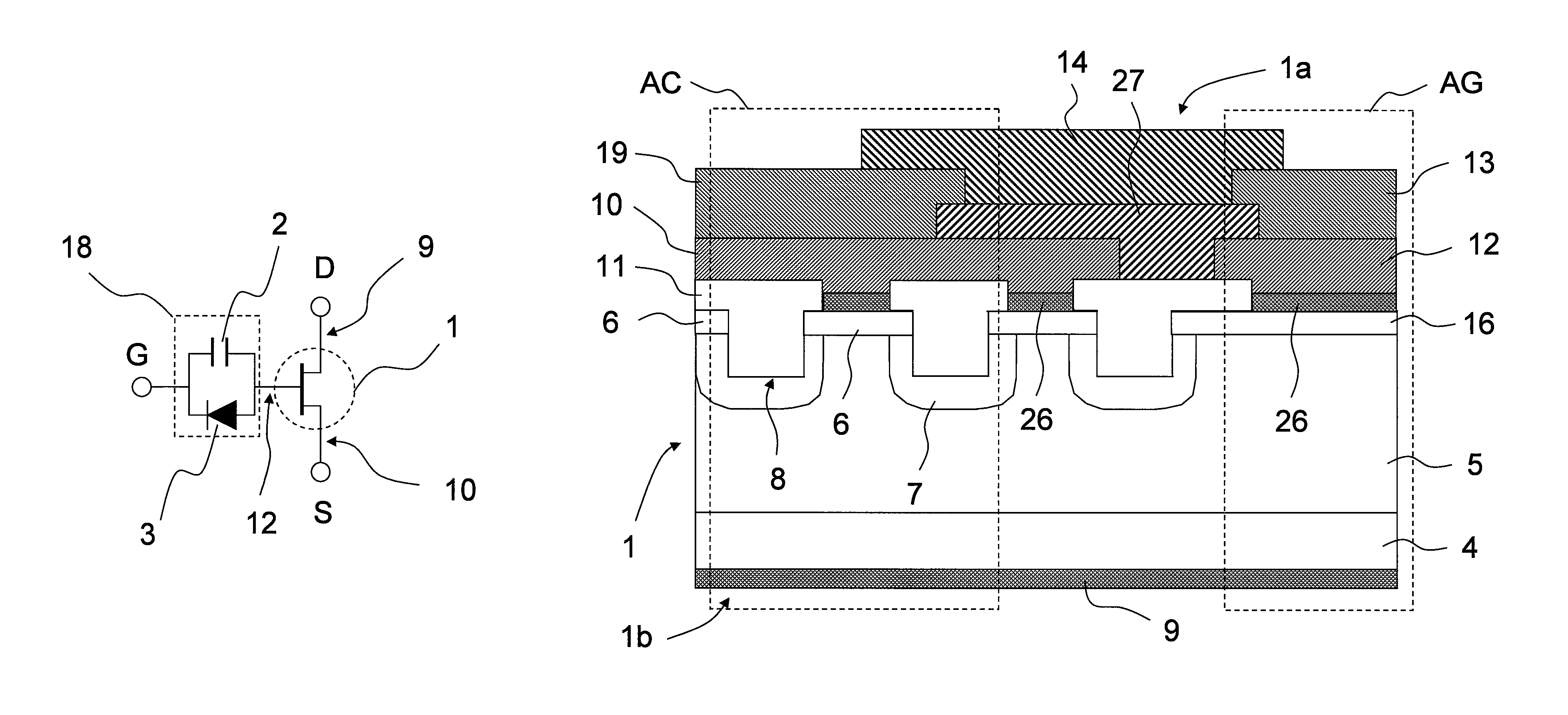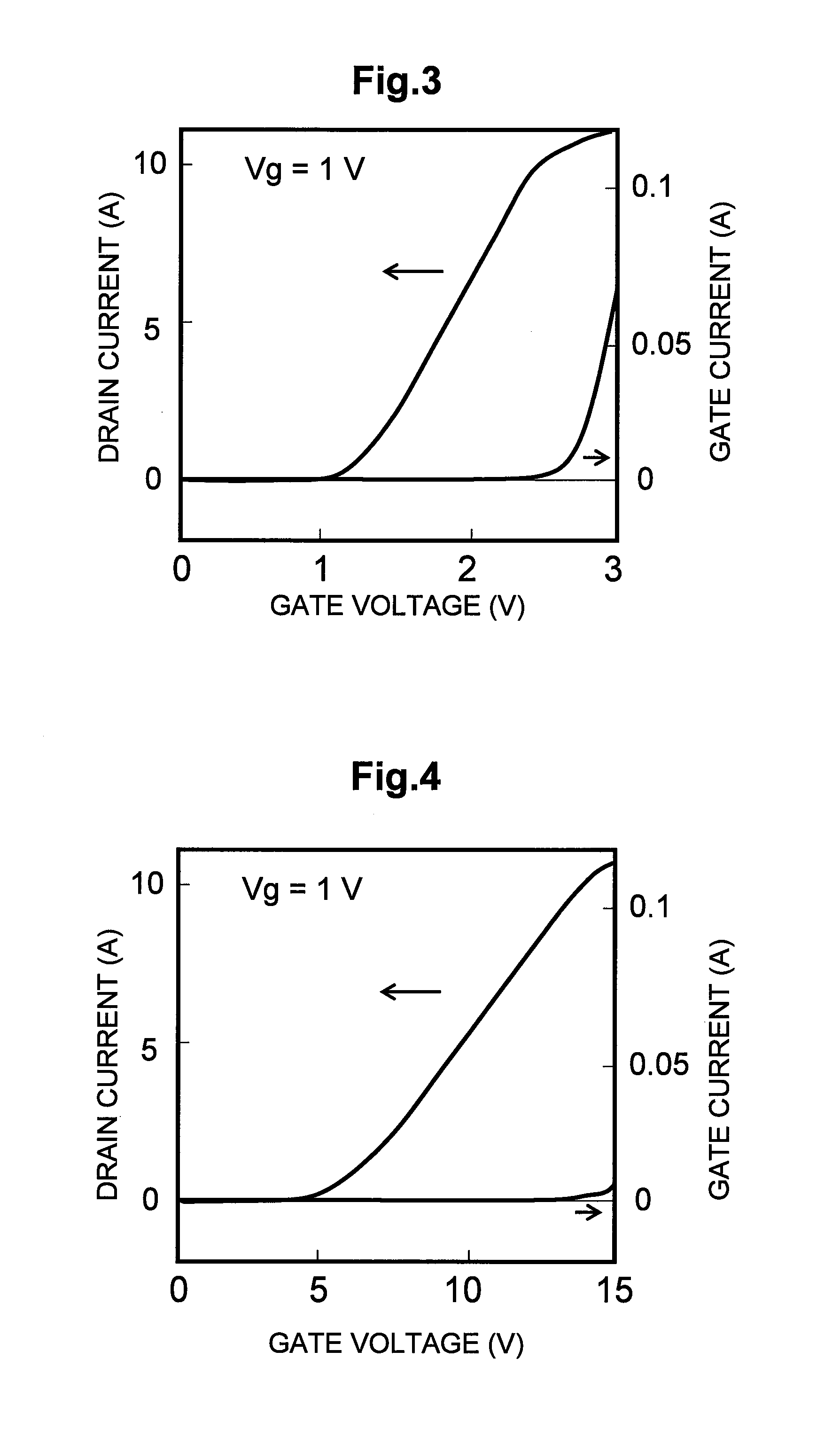Electronic circuit device
a technology of electronic circuit and electrode, which is applied in the direction of semiconductor devices, diodes, electrical apparatus, etc., can solve the problems of inevitably forming high-density interface levels, oxide films formed over silicon carbide substrates, and remaining carbon in oxide films, etc., to facilitate the formation of p-type and n-type conductivities
- Summary
- Abstract
- Description
- Claims
- Application Information
AI Technical Summary
Benefits of technology
Problems solved by technology
Method used
Image
Examples
first embodiment
[0091]1. Description of a Semiconductor Device and the Like of the Present Application (Mainly, from FIG. 1 to FIG. 9)
[0092]In this section, only an essential part of a normally-off type silicon carbide-based junction FET (1) is illustrated to mainly make a fundamental description. A peripheral structure and a manufacturing method of it will be described in Sections 7 and 8.
[0093]The first embodiment of the invention will hereinafter be described referring to some drawings. FIG. 1 is an equivalent circuit diagram of the first embodiment of the invention; and FIGS. 2 and 3 are a cross-sectional structural view of a silicon carbide junction FET to be used in the present embodiment and a characteristic diagram of a gate. As illustrated in FIG. 1, no additional element is inserted between an external source terminal S of the silicon carbide-based junction FET (1) and a source electrode 10 and an external drain terminal D and a drain electrode 9. As an insertion element or element group ...
second embodiment
[0101]2. Description of a Semiconductor Device and the Like of a Second Embodiment According to the Present Application (Mainly from FIG. 10 to FIG. 13)
[0102]FIG. 10 is a circuit diagram of the second embodiment of the invention. A difference from the first embodiment is that a diode 3 serves also as a capacitive component instead of the capacitor 2. Accordingly, the capacitance of the diode 3 becomes one digit greater than that of the first embodiment. A silicon carbide junction FET is similar to that of the first embodiment.
[0103]Advantages of the present embodiment will next be described. FIG. 11 shows the relationship between a voltage VG of an external gate terminal and a drain current of the junction FET 1. As shown in this graph, the voltage applied to the external gate terminal G is shared by the diode 3 and the gate of the junction FET 1. Application of a voltage of about 2V to the external gate terminal produces a drain current through the junction FET 1, while application...
third embodiment
[0108]3. Description of a Semiconductor Device and the Like of the Present Application (Mainly from FIG. 14 to FIG. 21)
[0109]A difference of the third embodiment from the first embodiment and the second embodiment is that the semiconductor device of the present embodiment includes, in a chip thereof, a capacitor 2 and a diode 3. Prior to describing the present embodiment, the configuration of a conventional chip and the structure of a gate pad will be described referring to FIGS. 14 and 15 (an A-A′ cross-section of a peripheral region of a gate pad illustrated in FIG. 14). In the conventional junction FET 1, a gate pad 13 and a source pad 19 are placed over the surface of the chip and the source pad 19 has an active region 28 of the device right below the source pad 19. An interconnect 12 of the gate is placed over an on-substrate insulating film 11 and is coupled to the gate pad 13. A passivation film 14 is formed to cover therewith the gate pad 13.
[0110]In the present embodiment, ...
PUM
 Login to View More
Login to View More Abstract
Description
Claims
Application Information
 Login to View More
Login to View More - R&D
- Intellectual Property
- Life Sciences
- Materials
- Tech Scout
- Unparalleled Data Quality
- Higher Quality Content
- 60% Fewer Hallucinations
Browse by: Latest US Patents, China's latest patents, Technical Efficacy Thesaurus, Application Domain, Technology Topic, Popular Technical Reports.
© 2025 PatSnap. All rights reserved.Legal|Privacy policy|Modern Slavery Act Transparency Statement|Sitemap|About US| Contact US: help@patsnap.com



